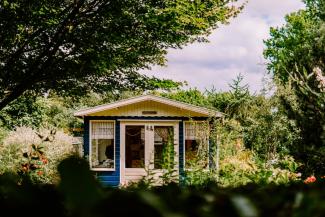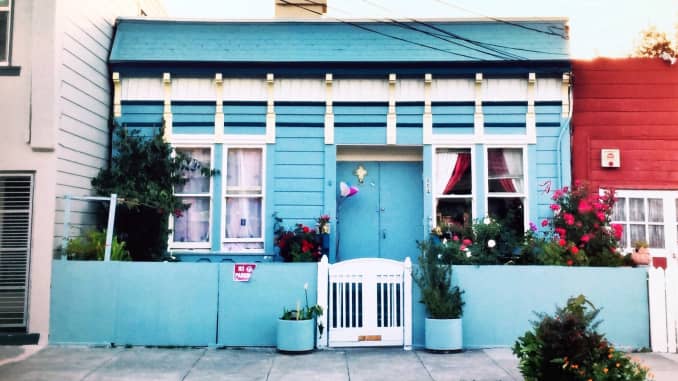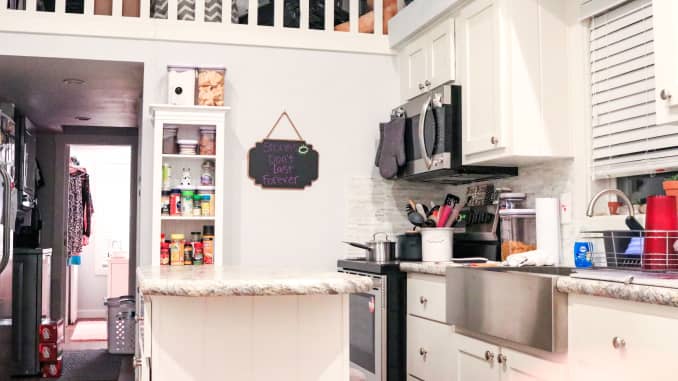
How to win a tiny house worth $100,000, or save up for your dream home
Ever wonder what it could be like to own a tiny house? You might have a chance to find out. Nonprofit fundraising website Omaze is featuring a contest where one lucky winner will win a tiny, customizable home of up to $100,000 in value.
The contest is part of an initiative to raise money for PATH, an organization working to end homelessness in California. Entry to the contest is free, but you can also donate between $25 and $100 to boost your number of entries.
What, exactly, is a tiny house, and why have they become a much-talked-about option over the years? Here’s an overview, as well as a couple of tips on saving up to own a home of your own, whatever size it might be.
Millennials have ‘the lowest homeownership rate’
Owning a home has long been part of the American dream and a viable way to build wealth both for an individual and for their family down the line. Today, however, millennials have “the lowest homeownership rate for those who are under the age of 35 that [the Census Bureau] has recorded historically,” says Jessica Lautz, vice president of demographics and behavioral insights for the National Association of Realtors (NAR).
“A lot of it has to do with affordability” and finances, says Lautz. Millennials face daunting challenges when buying a home: “They are likely paying down student loan debt and having hurdles saving for a down payment.”

Twenty/20
That’s where tiny houses could come in. A tiny home can be much more affordable. Whereas the national median price of a home is $266,300, per January 2020 data from NAR, tiny houses listed on sites like Tiny House Marketplace cost as little as $22,000.
In size, a tiny house can be anywhere from 80 to 700 square feet, according to AARP, whereas the median single family home in the U.S. was 2,386 square feet in 2018, per Statista.
South Carolina-based broker J.D. Rinehart, whose daughter rented a tiny home during her time at Clemson University, says one of the reasons people are attracted to the arrangement is that “they don’t have to spend as much on housing.”
“I could show you a $200,000 house that’s an entry point that’s going to put pressure on you if you can save up the down payment,” he says, “Or I can take you over to this tiny house and say, ‘Hey, this one is gonna be $89,000.’”

Twenty/20
Because the cost of the home itself is much lower, the down payment and mortgage are, too. Tiny house owners will also be able to save on the cost of utilities like heat and electricity.
While regulations in most states make it difficult to build and live in a tiny house, parts of California, Florida, and Texas, as well as some other states, are more accepting of them, according to Curbed. Oregon appears to be particularly welcoming. And more cities across the country are expected to begin relaxing restrictions around construction.
Sites like ipropertymanagement.com, a hub for up-to-date real estate information, estimate that there around 10,000 tiny houses in use in the U.S. right now.
‘Start with the end in mind’
So how do you save up to get your own tiny house — or any home at all, for that matter? Here are a few tips to start working toward that dream.
“Start with the end in mind,” says Charlie Rocco, a certified financial planner with Moneco Advisors in Connecticut. “We strongly encourage our clients to get a feel for the town and neighborhood they want to be in and to get an idea of what a house will cost. Generally, a local, well-referred realtor can help.”
Once you’ve found the location you’d want to live in and have spoken with a few realtors to get a sense of the average cost of home in that area, calculate how much of a down payment you’d need. That’s typically 20% of the price of the home but can be much less.
We strongly encourage our clients to get a feel for the town and neighborhood they want to be in and to get an idea of what a house will cost.
- Charlie Rocco, Financial Planner
“Once you know your down payment, then you divide that amount by the months left until you plan on purchasing the home,” says Mike Alves, a certified financial planner at financial services firm Vida Private Wealth in California.
Say you’re planning to buying a home for that median $266,300. If you receive 26 paychecks per year, to have a 20% down payment ($53,260) within two years, you’d put aside $1,024 per paycheck. If you expect you can qualify for a low down payment mortgage requiring just 3% ($7,989), you’d need to set aside $154 per paycheck.
Don’t forget to make sure you really do want to buy a home in the first place and that it makes sense to you. It’s not always a good financial move.
“Housing prices are more unstable and volatile than they used to be,” says Elizabeth Jetton, a certified financial planner and consultant to the Financial Planning Association. “Don’t assume it’s a great investment and a great idea. Sometimes being flexible and being a renter helps you stay resilient.”
Omaze’s competition to win your dream tiny house closes on July 9, 2020.

